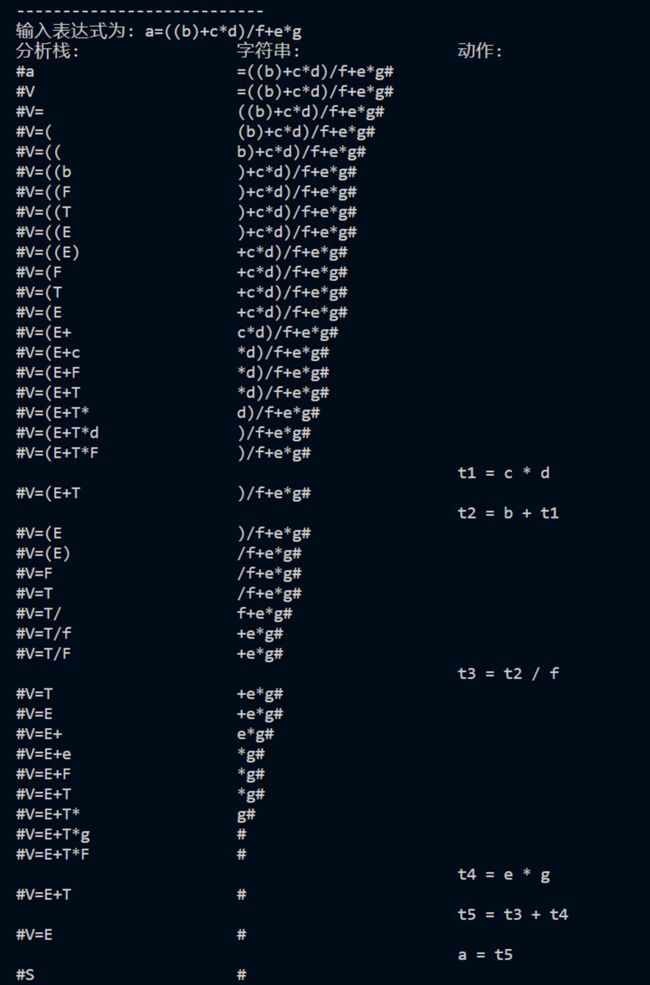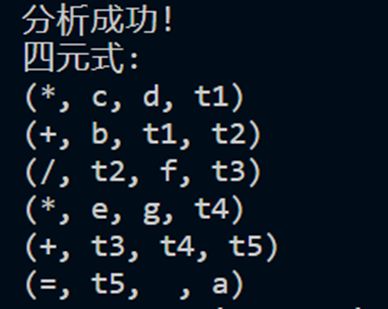一、程序功能描述
本程序由C/C++编写,实现了赋值语句语法制导生成四元式,并完成了语法分析和语义分析过程。
以专题 1 词法分析程序的输出为语法分析的输入,完成以下描述赋值语句 SLR(1)文法的语义分析及中间代码四元式的过程,实现编译器前端。
G[S]: S→V=E
E→E+T∣E-T∣T
T→T*F∣T/F∣F
F→(E)∣i
V→i
二、主要数据结构描述
关于本程序的数据结构,首先用map存储了非终结符及终结符的编码映射,而后用string存储文件读入和写入的信息等,最重要的是利用vector二维数组实现了SLR分析表,用于存储分析动作;此外定义了四元组和栈的相应结构体。由于本人习惯,字符串处理总体上采用了C风格和C++方式并存的写法。
、程序结构描述
除main函数外,本程序共定义了4个函数:
getIndex用于返回输入字符在deCode 映射中的对应索引,若非法字符则返回-1。
dispQuad用于显示解析过程中生成的四元组,并展示输入表达式的中间代码表示;SLR_display则显示分析栈的当前状态、剩余的输入字符串以及解析过程中的当前动作。这两个函数都用于实现编译前端的可视化。
在SLR_analysis真正实现了SLR(1)文法的分析过程,使用栈 (anstk) 跟踪解析过程中的状态、符号和输入字符串位置,并根据 SLR 解析表执行移入、规约和接受等动作,最后在解析过程中生成四元组,表示中间代码。
四、程序测试
测试案例展示如下:
测试用例1:a=((b)+c*d)/f+e*g



#include
#include
#include
#include
#include


